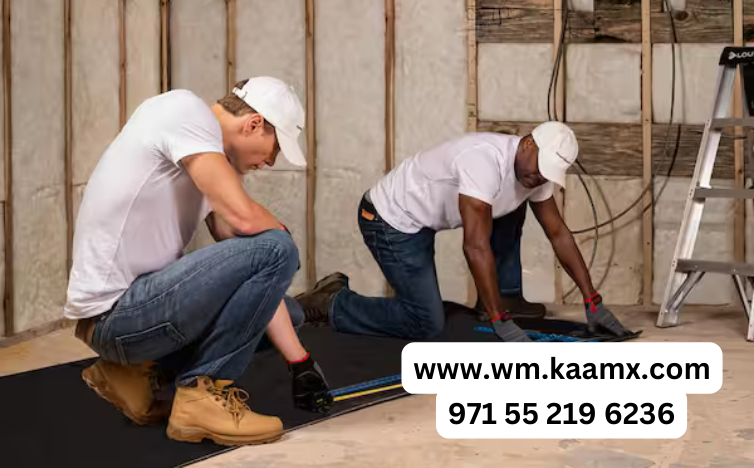Mass Loaded Vinyl is a flexible, dense material used for soundproofing. It typically consists of a mixture of polyvinyl chloride (PVC) or other plastic compounds and barium sulfate or calcium carbonate, making it both heavy and flexible. MLV is often used to block sound transmission through walls, floors, and ceilings.
Benefits of Mass Loaded Vinyl
Effective Noise Reduction
MLV is highly effective at blocking airborne noise due to its dense structure. It reduces sound transmission between rooms, making it ideal for homes, offices, and studios.
Versatility
MLV can be used in various applications, including walls, floors, ceilings, and even doors. It’s suitable for both new construction and retrofitting existing structures.
Ease of Installation
Installing MLV is relatively straightforward. It can be cut to size and easily attached to surfaces with nails, screws, or adhesive. Its flexibility allows it to conform to the shape of the surface it’s applied to.
Types of Mass Loaded Vinyl

Standard MLV
Standard MLV is the most common type. It typically comes in rolls and is available in various thicknesses and densities. Thicker and denser MLV provides better soundproofing but can be heavier and more difficult to handle.
Reinforced MLV
Reinforced MLV includes a fabric or mesh layer that adds strength and durability. This type is less likely to tear or stretch, making it ideal for high-traffic areas or installations requiring frequent handling.
Self-Adhesive MLV
Self-adhesive MLV comes with an adhesive backing, making installation even easier. This type is ideal for applications where nails or screws cannot be used.
Factors to Consider When Choosing MLV
Thickness and Density
The thicker and denser the MLV, the better its soundproofing capabilities. However, thicker MLV is also heavier and may require additional support during installation.
Application
Consider where you’ll be using the MLV. For walls and ceilings, standard or reinforced MLV is typically sufficient. For floors, a denser and thicker MLV may be necessary to handle foot traffic.
Installation Method
Decide whether you need standard, reinforced, or self-adhesive MLV based on your installation requirements. Self-adhesive MLV can simplify the installation process but may not be suitable for all surfaces.
Cost
MLV varies in price based on thickness, density, and type. Set a budget and choose the best MLV you can afford without compromising on quality.
Installation Tips for Mass Loaded Vinyl
Measure and Cut
Accurately measure the area where the MLV will be installed and cut the material to size using a utility knife or heavy-duty scissors.
Attach to Surface
Attach the MLV to the surface using nails, screws, or adhesive. Ensure it is securely fastened and covers the entire area.
Seal Edges
Seal the edges of the MLV with acoustic caulk to prevent sound leaks. This step is crucial for achieving the best soundproofing results.
Overlap Seams
If using multiple sheets of MLV, overlap the seams by at least two inches to ensure there are no gaps for sound to pass through.
Contact Muhammad Shaheen Carpentry at 971 55 219 6236, and discover the transformative science of soundproofing for your space.
Conclusion
Choosing the best Mass Loaded Vinyl for your soundproofing needs involves considering factors like thickness, density, application, and installation method. By understanding the different types of MLV and following proper installation techniques, you can effectively reduce noise transmission and create a quieter environment.
By selecting the right MLV, you can significantly improve the acoustics of your space, making it more comfortable and functional.

